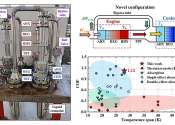Applied Physics Letters
Applied Physics Letters is a peer-reviewed scientific journal that is published 52 times per year by the American Institute of Physics. Its focus is rapid publication and dissemination of new experimental and theoretical papers regarding applications of physics in all disciplines of science, engineering, and modern technology. Additionally, there is an emphasis on fundamental and decisive new developments which lay the groundwork for fields that are rapidly evolving.
The journal was established in 1962. The editor in chief is Nghi Q. Lam of the Argonne National Laboratory. According to the Journal Citation Reports, the journal has a 2010 impact factor of 3.820, ranking it first out of 105 in the discipline of applied physics. In 2009, it also ranked first out of 105 journals assessed in this discipline.
- Publisher
- American Institute of Physics
- Country
- United States
- History
- 1962–present
- Website
- http://apl.aip.org/
- Impact factor
- 3.844 (2011)
Some content from Wikipedia,
licensed under CC BY-SA









